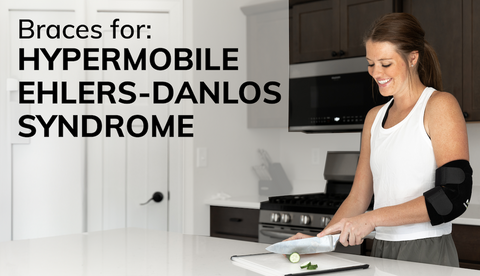Compression Fracture
Do I Have a Compression Fracture?
A compression fracture of the back happens when your vertebrae, or bones of the spine, break. Compression fractures can occur anywhere in the spine, but most commonly in the lower thoracic spine and upper lumbar spine. If you’re wondering if the pain you are experiencing is a compression fracture, reference the graphic below. This graphic highlights the most commonly broken vertebra as T9 through L1. Anything before T8 or after L2 is unlikely to fracture.

Do I have Symptoms of a Vertebral Compression Fracture?
Symptoms of a vertebral compression fracture vary greatly making it hard to identify. Some people experience fairly acute back pain that overtime becomes chronic, while others have sudden severe back pain.
-
Acute back pain that turns chronic overtime
-
Noticeable hunchback deformity called kyphosis. This is most common if you have a wedge fracture on your vertebrae.
-
Loss of height
-
Crowding of internal organs
-
Loss of muscle and aerobic conditioning due to lack of activity and exercise
-
Pain that worsens when you walk or stand
-
Difficulty bending or twisting
-
Pain is noticed most often when performing daily tasks that slightly strain back muscles. For example, putting sheets on the bed, or unloading groceries.
What is the Difference Between a Wedge Compression Fracture, Crush Fracture, and Burst Fracture?
You may have heard a compression fracture referred to as a burst fracture, crush fracture, or even a wedge fracture. Making the distinction between the different names is important as they have different implications. For example, the term wedge fracture means that the vertebrae were fractured at the front of the bone in the front of the spine. This leaves the back unchanged, which results in a wedged shaped vertebrae. A crush fracture is when the entire bone breaks, rather than just the front of the vertebrae. A burst fracture is when there is height loss in both the front and the back of the vertebra. Knowing which type of fracture you have is important because of the long-term effects of the different breakages. For example, a burst fracture has many more long-term implications that may include progressive deformity or neurological compromise.
What Causes Compression Fractures?
The major cause of a compression fracture is osteoporosis. You may be wondering, what is osteoporosis? Osteoporosis occurs when there is an imbalance between the new bone formation in your body and the old bone resorption. Meaning that your body may be failing at forming new bones or maybe the old bone is being reabsorbed. If calcium intake is not sufficient the bodies bone production and bone tissue may suffer. This results in weak and fragile bones that may break easier. In other words, osteoporosis weakens the bones making them highly susceptible to compression fractures.

-
The leading cause of osteoporosis is lack of hormones. Estrogen for women and androgen for men.
-
Women over the age of 50 are the most likely to experience osteoporosis and compression fractures.
-
The main symptoms of multiple compression fractures include height loss, kyphosis, and a bulging stomach.
-
As women begin to enter menopause they also lose estrogen. This is why women over 50 are the most likely to experience the weakening of their bones. If you’re a female with a small frame your chances increase even more.
-
A compression fracture is defined as a vertebral bone in the spine that has decreased in height at least 15-20%.
-
There are more than 3 million cases of osteoporosis per year in the US alone
What is the Treatment for Spine Compression Fracture?
Thankfully, treatment for compression fractures is fairly conservative and treatable. The majority of fractures can heal with a combined effort that includes reducing your activity, medications to stabilize density of your bones, and a good back brace to minimize your movement during your journey to health.
Activity modification is most often recommended for acute pain because it can further weaken the bones. Often, bed rest is used for just a few days in less serious instances. Back bracing provides your spine with internal support to limit motion of the injured area. BraceAbility offers many different braces to help stabilize your back if you are suffering from osteoporosis or a compression fracture.
However, some people may have to turn to surgery if conservative methods aren’t doing the trick. The most common surgical options are lumbar fusions and vertebroplasty. A lumbar infusion joins the bones of the spine together so there is no longer any movement between them. In a vertebroplasty, the surgeon injects bone cement into the fractured bone to provide stability. If you would like more information on these procedures, consult with your doctor.










